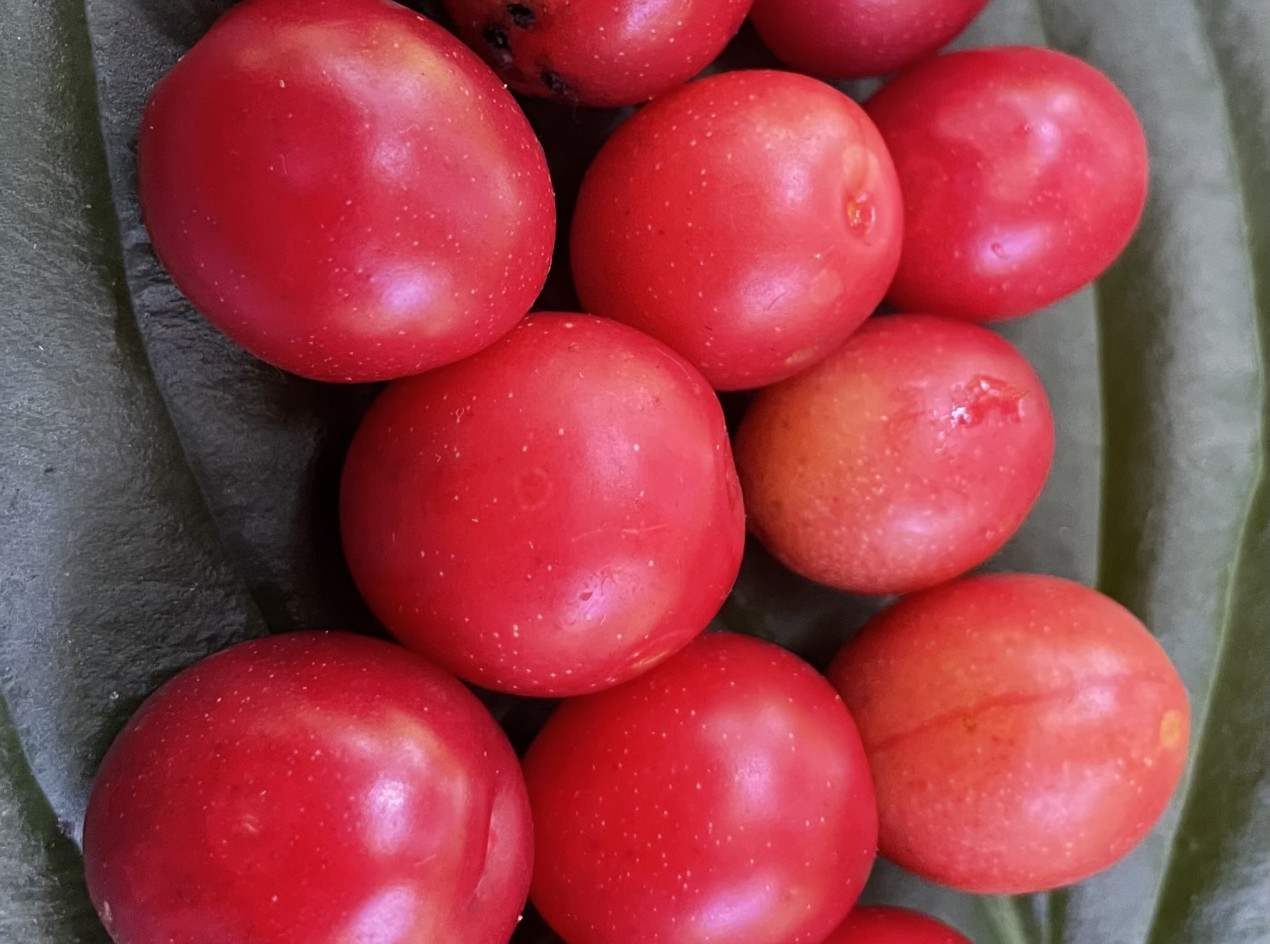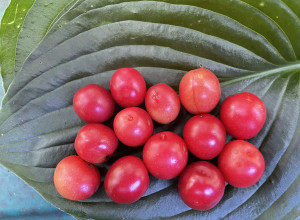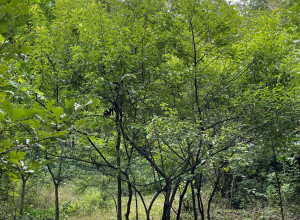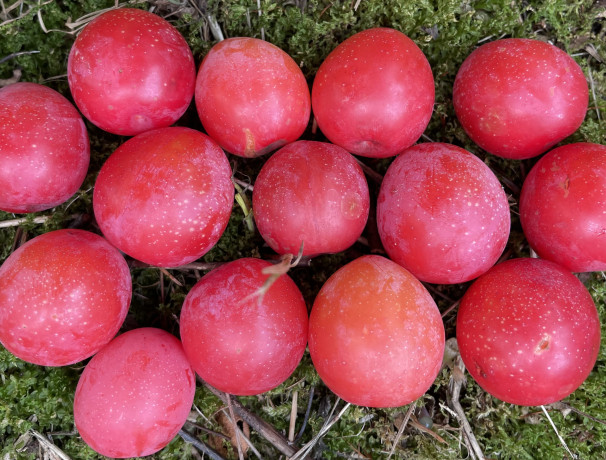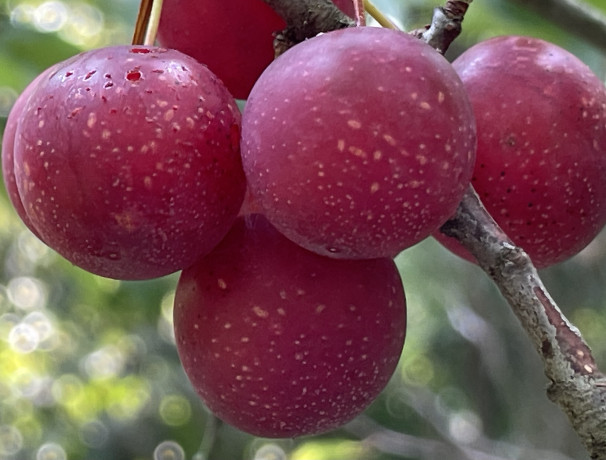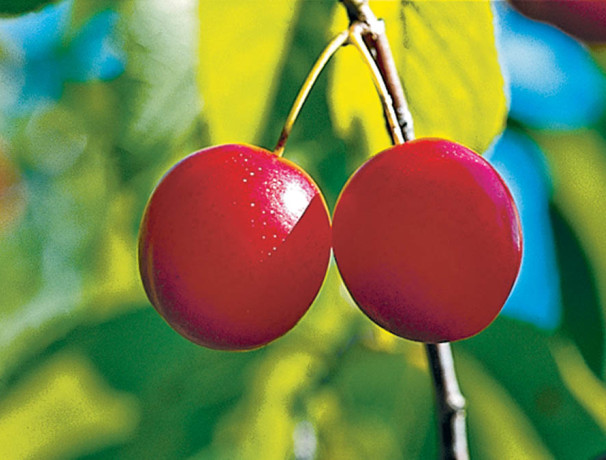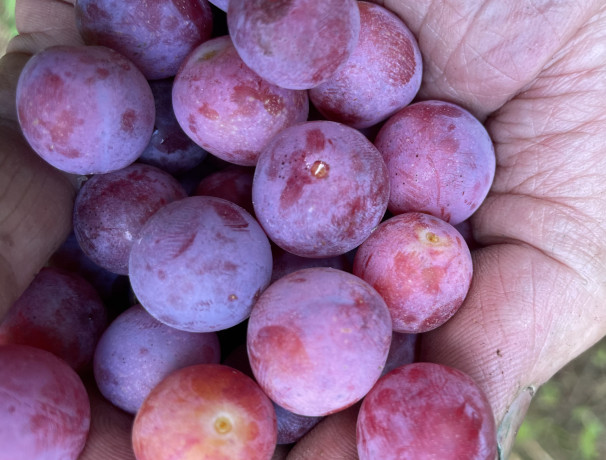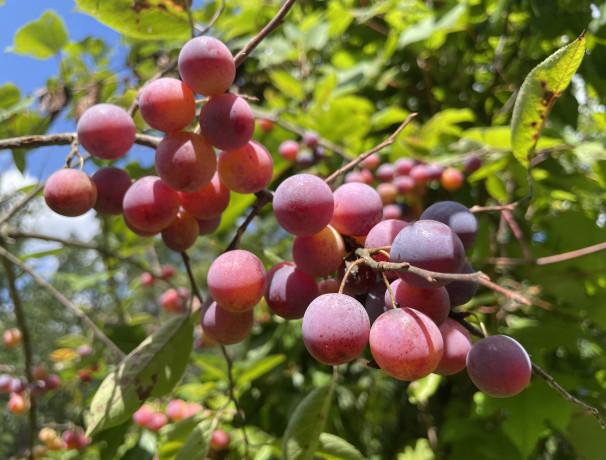Experience-Seeds-Knowledge-Plant Discoveries-Ecological Enrichment-Join Now Click Here!

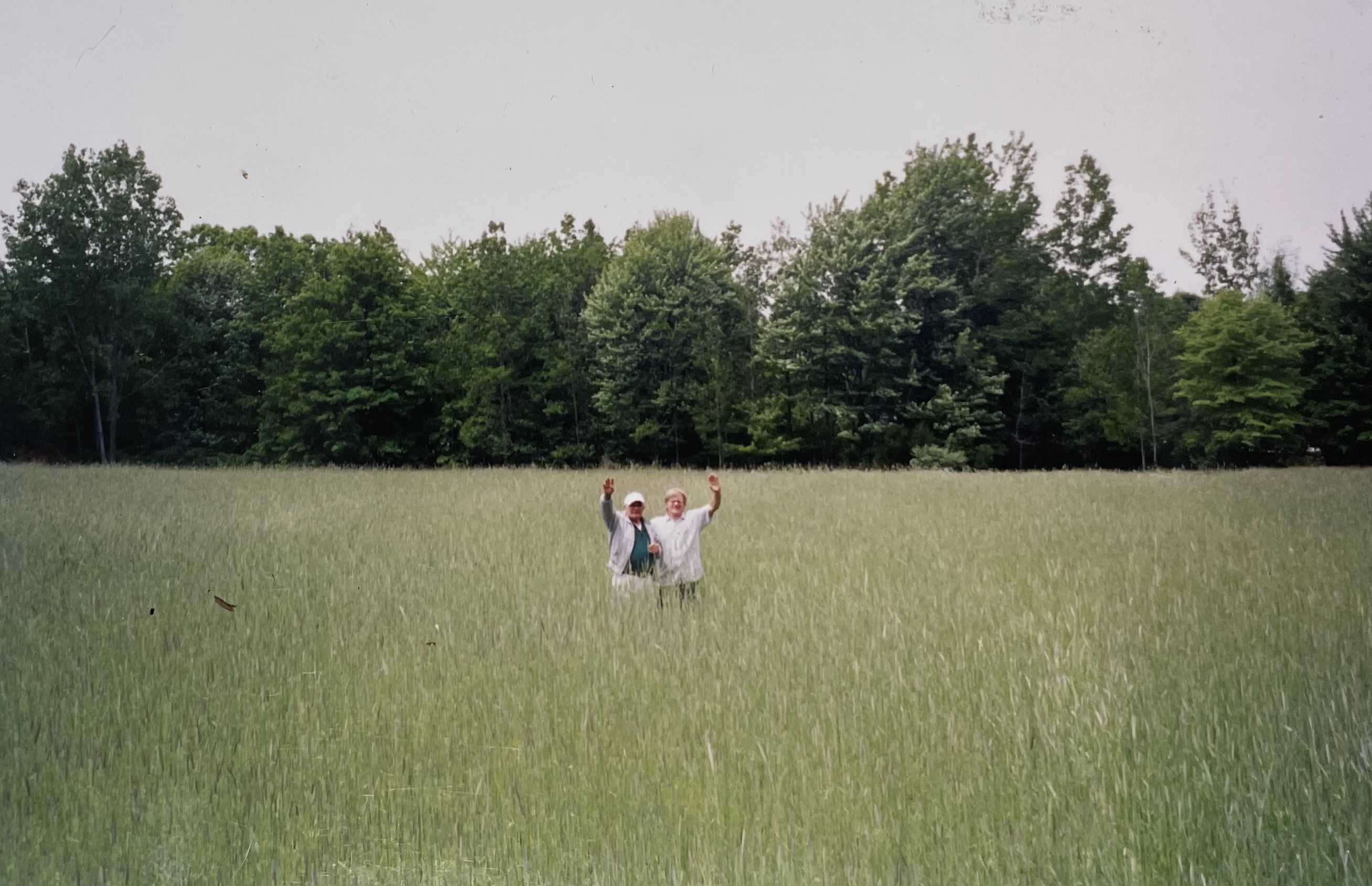
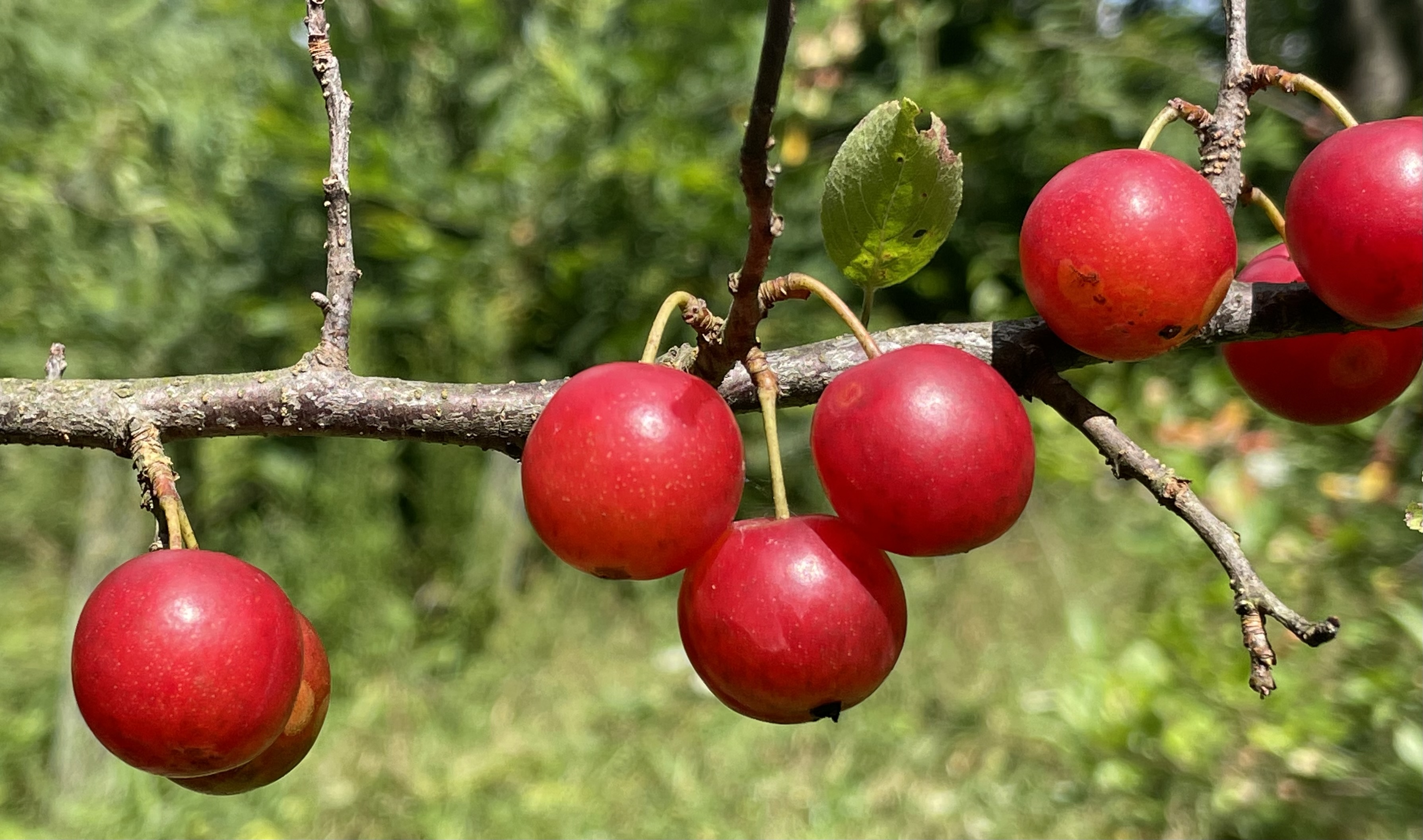

Chickasaw and Wild Goose Plum Hybrid-Grown and Selected from Seed to Tree to Seed Again
After twenty years of testing and growing plums, I found a strain that makes a plum easy to establish while at the same time reducing the suckering aspect of many wild plums. Combined with its large leaves and excellent full canopy this natural hybrid of wild goose plum and Chickasaw plum provides both the clean foliage with a central trunk and symmetrical branching. The fruits are a bright red like the Chickasaw plum without the over the top astringency and tartness but free of diseases and insects both for the foliage and the fruits.
The discovery of this strain was quite by accident. I noticed a number of wild goose plum seedlings with incredible vigor in my greenhouse that often grew to 5 ft. in one year. The seedlings had the Chickasaw plum type of foliage. I took those few plants and made an out planting separating them from all the other plums. Over the years, the plums grew nicely and were incredibly vigorous and healthy. After seven years or so the fruiting began. This is a good sign indicating long life as well as being able to maintain that central trunk as is without suckers or borers. This is critical in the plum world.
This is a good selection both for rootstock as well as experimental fruit production and an ornamental plum. Cultivar selection would be easy in one generation and would lead to more robust forms of wild, indigenous plums useful for areas outside of commercial plum production and where late frosts destroy the European types as well as black knot. These two problems make plum growing difficult if not impossible in most of the central and eastern U. S. Curculio is not found in this planting ever and no fruits are infected with bugs. Part of it is due to the thick skin on the plum making it unlikely to keep a population of bugs constantly infecting the fruit.
Yields are excellent with this hybrid. It takes a good ten years to really see the possibilities in terms of its productivity. It is the highest yielding type with dense clusters of oblong fruit. This is a tart plum and excellent for jam. In many ways similar to a Montmorency cherry with a strong sweet tart flavor. Letting the fruit ripen on the tree fully lowers the ascorbic acid in the fruit makes it possible to eat it fresh off the tree but keep in mind, Gooseasaw is a tart plum similar in characteristics as the Chickasaw plum.
Germinating the seeds: Add a lightly moist Canadian peat moss with the seeds and let sit for 3 days. Then put in the refrigerator for 33 to 38 F for 90-120 days. Like all plums some will start to sprout during this period in the fridge. You can pluck these out and then pot them up. The seeds have been stored at full moisture levels and have not dried out so do not soak them. Keep a check on the moisture in the peat moss so the seeds do not rot when they crack open and the radicle emerges.
Seeds have been floated to remove blanks.
| Plant Specs | |
| Genus & Species | Prunus munsoniana x angustifolia |
| Seed Source | Michigan |
| Hardiness | -25F to -30F |
| Height (ft) | 15-25 ft. |
| Width (ft) | 15-20 ft. |
| Pollination Requirements | Self pollinating. Additional plants from this same strain will make it even more fertile. Some overlap with chickasaw plum and wild goose plum but possibly not enough to call it cross pollinating to any degree. |
| Soil | Very adaptable from sand to loam. Similar in requirements to the American plum. |
| Climate | Zones 3-9. |
| Ease of Cultivation | The most vigorous plum cross I have found. Once established trees can maintain both a central leader and fill out with to create a strong single stemmed tree averaging 2-4 ft. of growth per year depending on the location. Works well in poor soils while creating a solid canopy which suppresses grasses much better than other plums. |
Related Plants
Wild Goose Plum Seeds
Fresh Eating-Best Quality-Hybrid Vigor in Seedling Progeny-Excellent Production of Clean Fruit..
$120.00
Bright Sky Plum Seeds
High Quality Fruits-Prolific Production-Beach Plum Type-Clean Foliage and Fruit Dunbarii plum pro..
$220.00
Chickasaw Plum Seeds (Mini-Chee Variety)
Bright Red Tart Fruit-Selection for Northern and Midwestern - Mini-Chee VarietyNormally ..
$160.00
Red Planet Plum Seeds
"Red Planet" represents a new variety of plum found as a natural hybrid of two indigenous North Amer..
$160.00
Cheery Cherry Plum
"Cheery Cherry" Plum seeds and scions: This seedling selection of a Chickasaw plum was selected due ..
$220.00
Luminescence Plum
Selected Chickasaw seedling plum found within a population grown from seed of ot..
$220.00
Brilliance Plum
Red and violet colored plums are produced in great profusion on a small compact uprig..
$120.00
Plum Seed Mix
soldout and discontinued100 seeds of 5 types of plums. 500 seeds total. Each packaged separate..
$320.00
